- Home
- Machining techniques
- CNC Machining Services
- Cooperative supply services
- Designs
- Materials
- Finishing Services
- Shop
- Products
- Guide
- About Us
- Contact Us
2020.6.28
Similar to lathes, drilling machines are also one of the most common machine tools used in the machine shop. As a versatile machine, the drill press primarily for drilling holes and a lot of other operations with proper tools. Here we’ll talk about the drilling machine definition, parts and functions, types and uses.
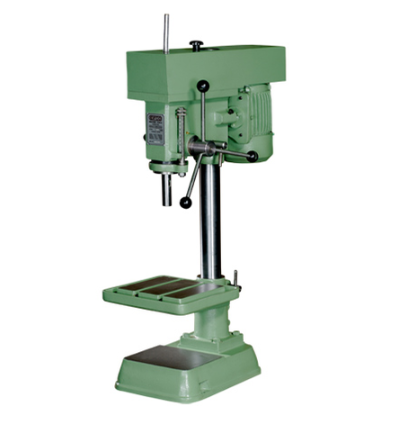
A drilling machine, also called a drill press, is a powerful tool used to cut a round hole into or through metal, plastic, wood, or other solid materials through turning and advancing rotary drill bits into a workpiece. This drilling cutting tool is held in the drill press by a chuck and fed into the work at variable speeds. The speed and feed should be set properly and coolant needs to be provided for the desired finished part. The drilling machine can not only be applied in the drilling process, but also useful for many other machining operations. There are various operations can be performed on a drilling machine, such as plane drilling, step drilling, core drilling, boring, counterboring, reaming, countersinking, spot facing, tapping, and trepanning.
A drilling machine is usually composed of several or all of the following parts.
– Base: generally bolted with the ground to support the weight of the drilling machine.
– Column: located on one side of the base, can carry the load of the arm and drill head, with a sliding table mounted on it.
– Arm: at the top of the column, carries the drill head and the housing of the driving mechanism.
– Drill head: mounted on one side of the arm, consists of feed and driving mechanism. It can slide up and down.
– Worktable: mounted on the column, can move vertically and horizontally.
– Feed mechanism: hand and automatic feed by an electrical motor.
– Spindle: holds the drill or cutting tool and revolves in a fixed position in a sleeve.
– Chuck: situated on the spindle, holds the drill jig.
– Electric Motor: connects the spindle to rotate a cutting tool on its axis.
Here are some different types of drilling machines with their construction, characteristics, and uses.
1. Portable drilling machine (Hand drilling machine): generally small in size and contains a universal motor, used for drilling holes on the rocks or any rigid surface, suitable for any location. The piece to be drilled is held in a vice.
2. Sensitive drilling machine (Bench drilling machine): perfect for producing small holes at high speeds, usually consists of a base, worktable, spindle, drill head, driving mechanism and column. The work is started from the drill fed into the piece by hand.
3. Radial drilling machine: mainly for drilling large and heavy workspaces, the table can be adjusted to suit different heights. It allows the operator to make the spindle directly over the workpiece rather than move the part to the tool, and also capable to create intersecting or angular holds in one setup.
4. Upright drilling machine: larger and stronger than sensitive drilling machine, designed for handling medium to large-sized holes.
5. Gang drilling machine: can be used for drilling, reaming, counterboring and tapping, just need to move the machine back and forth.
6. Deep mole drilling machine: special type that is designed to drill deep holes in the connecting rods, spindles and others, with high cutting speed and less feed.
7. Multiple spindle drilling machine: with several spindles, perfect for drilling a large amount of holes into a part and drilling same holes on identical workpieces.
8. CNC drilling machine: computer numerical control drilling machine can automatically change tooling with a turret or automatic tool changer. The program controls the speeds, feeds and table position.
9. Micro drill press: extremely accurate, high spindle speed, used to handle tiny or very small parts.
10. Turret type drilling machine: equipped with several drilling heads mounted on a turret, the tool can be quickly indexed into position.
1. Basic Drilling: Creates simple parallel-sided holes in various materials like metals, ceramics, and plastics, serving as the foundation for other drilling operations.
2. Peck Drilling: Used for deep holes, involves incrementally advancing and retracting the drill bit to clear chips and allow coolant flow, ensuring precision and preventing overheating.
3. Spot Drilling: Creates a shallow guide hole to ensure accurate positioning for subsequent drilling operations, preventing drill bit wandering.
4. Vibration Drilling: Applies controlled vibration during drilling to reduce friction, improve chip evacuation, and enhance surface finish, particularly useful for difficult-to-machine materials.
5. Core Drilling: Extracts cylindrical cores using hollow drill bits, commonly used in construction and geological sampling.
6. Step Drilling: Uses specialized bits with multiple diameters to create holes of varying sizes in a single operation, saving time and ensuring consistency.
7. Center Drilling: Creates precise starting points for subsequent drilling operations, particularly important in lathe work and deep hole drilling.
8. Deep Hole Drilling: Specialized process for creating holes with high depth-to-diameter ratios, using specific tools like gun drills and BTA drills.
9. Counterboring: Enlarges the entrance of an existing hole to accommodate fastener heads, creating a cylindrical recess.
10. Countersinking: Creates conical recesses for flush-fitting fastener heads, commonly used in woodwork and metalworking.
11. Reaming: Enlarges and smooths previously drilled holes to achieve precise diameters and superior surface finish.
12. Boring: Enlarges existing holes to precise dimensions using a boring tool, crucial for achieving tight tolerances.
13. Tapping: Creates internal threads in holes to accept threaded fasteners, essential for component assembly.
1. Understanding Types
Different drilling machines serve various purposes in both professional and DIY settings. Portable drills offer mobility and convenience, perfect for general household tasks and on-site work. Bench drill presses provide stability and precision for workshop projects. Floor-standing drill presses offer more power and capacity for larger projects. Radial arm drills allow for complex angle drilling and work with larger pieces. CNC drilling machines provide automated precision for production environments. The choice depends primarily on your intended use – for instance, a homeowner doing occasional repairs might be well-served by a quality portable drill, while a professional woodworker might need a bench or floor drill press.
2. Power Considerations
The power rating of a drilling machine is crucial for determining its capabilities. Light-duty machines (300-700W) work well for wood and soft materials in DIY projects. Medium-duty units (700-1200W) handle general-purpose work and are suitable for most professional applications. Heavy-duty machines (1200W and above) are necessary for working with metals and other hard materials. For example, a professional workshop handling various materials might need a 1500W floor drill press, while a home workshop doing primarily woodwork could function well with an 800W bench drill press.
3. Chuck Size and Capacity
The chuck size determines what drill bits you can use and consequently, the size of holes you can make. A 3/8-inch chuck suits most home users and light work. Professional users typically need a 1/2-inch chuck for versatility with different bit sizes. Industrial applications might require 5/8-inch or larger chucks. Consider future needs when choosing – while a 3/8-inch chuck might serve immediate needs, a 1/2-inch offers more flexibility for future projects.
4. Speed Range Requirements
Drilling speed significantly impacts work quality and efficiency. Low speeds (300-700 RPM) are essential for drilling metal and large holes. Medium speeds (700-1500 RPM) suit general-purpose work and are most commonly used. High speeds (1500+ RPM) work best for small holes in wood and soft materials. Variable speed control is valuable – for instance, a machine offering 500-3000 RPM range provides versatility for different materials and hole sizes.
5. Build Quality and Durability
Construction quality directly affects performance and longevity. Look for machines with cast iron or steel construction for stability and durability. Check the quality of the chuck, table, and column. A well-built machine will have minimal runout (wobble), smooth speed adjustments, and solid table movement. While budget machines might use more plastic components, professional-grade machines should feature primarily metal construction.
6. Safety Features
Safety features should never be compromised. Essential features include an emergency stop button, chuck guard, and depth stop. More advanced features might include thermal overload protection and no-volt release switches. A machine should have clear safety markings and come with comprehensive safety instructions. For instance, a good drill press should have a transparent chuck guard and easily accessible emergency stop.
7. Cost and Value Considerations
Price ranges vary significantly based on quality and features. Entry-level bench drill presses might cost $150-300, while professional-grade floor models can exceed $1000. Consider long-term value rather than just initial cost. Factor in durability, warranty, availability of spare parts, and maintenance requirements. Sometimes spending more initially on a higher-quality machine saves money over time through reduced maintenance and longer service life.
8. Additional Features
Modern drilling machines often come with helpful additional features. Look for built-in work lights for better visibility, laser guides for accurate hole placement, and digital speed displays. Some models offer quick-change chuck systems, built-in cooling systems, or automatic feed mechanisms. While these features add cost, they can significantly improve work efficiency and accuracy – for example, a laser guide can greatly improve drilling precision in repetitive tasks.
9. Workspace Considerations
Consider your available space when selecting a machine. Portable drills require minimal storage space. Bench-top drill presses typically need about 2 square feet of bench space. Floor-standing models need similar floor space but must also accommodate their height (typically 5-7 feet). Ensure adequate space around the machine for material handling and comfortable operation. For example, a floor drill press might need a 6×6 foot working area for comfortable operation with larger workpieces.
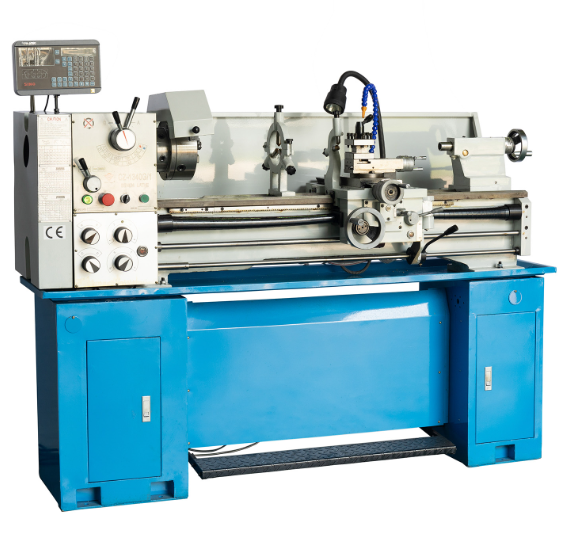 Guide to Bench Lathe: Definition, Functions, Applications, Advantages and Mounting
Guide to Bench Lathe: Definition, Functions, Applications, Advantages and Mounting
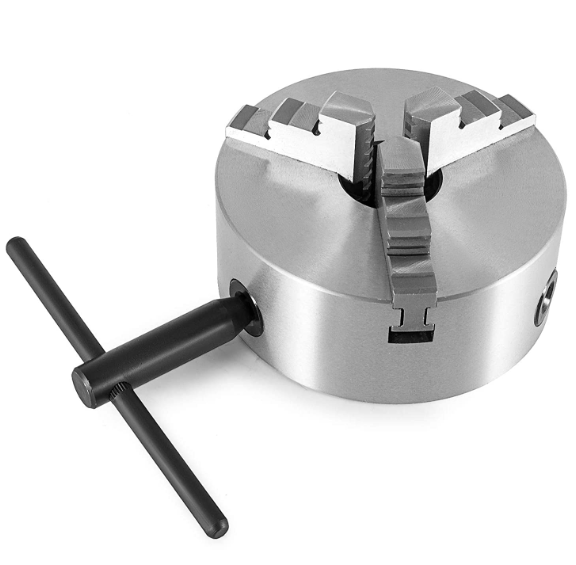 Guide to CNC Chuck: Definition, Working Principle, Parts, Types and CNC vs Manual Chuck
Guide to CNC Chuck: Definition, Working Principle, Parts, Types and CNC vs Manual Chuck
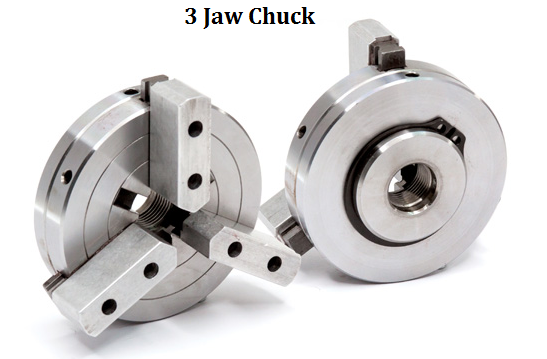 What is Three Jaw Chuck & How Does It Work | Lathe Chuck Types | CNCLATHING
What is Three Jaw Chuck & How Does It Work | Lathe Chuck Types | CNCLATHING
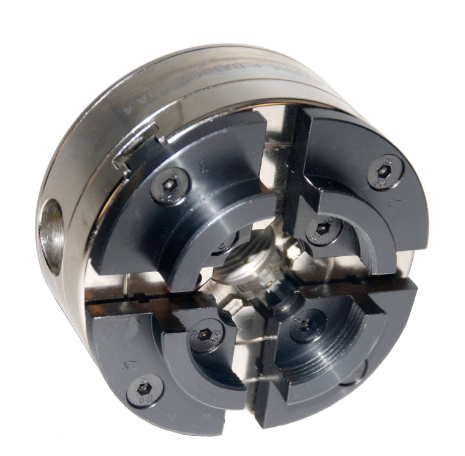 How To Install & Remove Lathe Chuck – Step By Step Guide For Lathe Chuck Installation & Removal
How To Install & Remove Lathe Chuck – Step By Step Guide For Lathe Chuck Installation & Removal
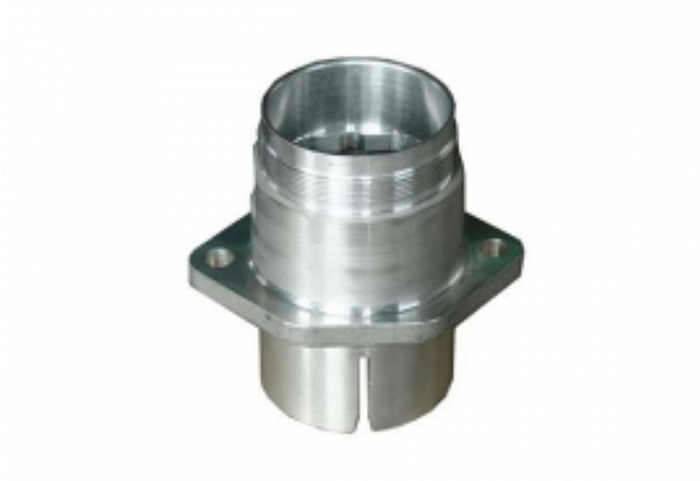 How To Select The Right CNC Lathe Spring Chuck?
How To Select The Right CNC Lathe Spring Chuck?
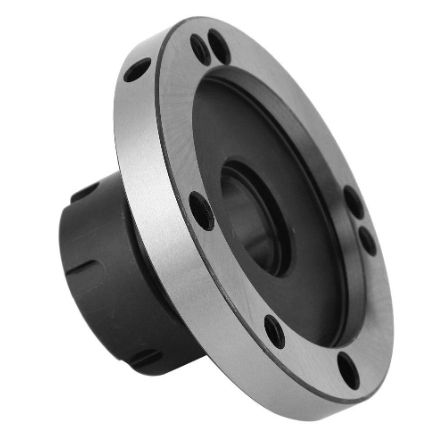 What Is a Collet Chuck | Collet Chuck vs 3 Jaw Chuck, What’s the Difference
What Is a Collet Chuck | Collet Chuck vs 3 Jaw Chuck, What’s the Difference
